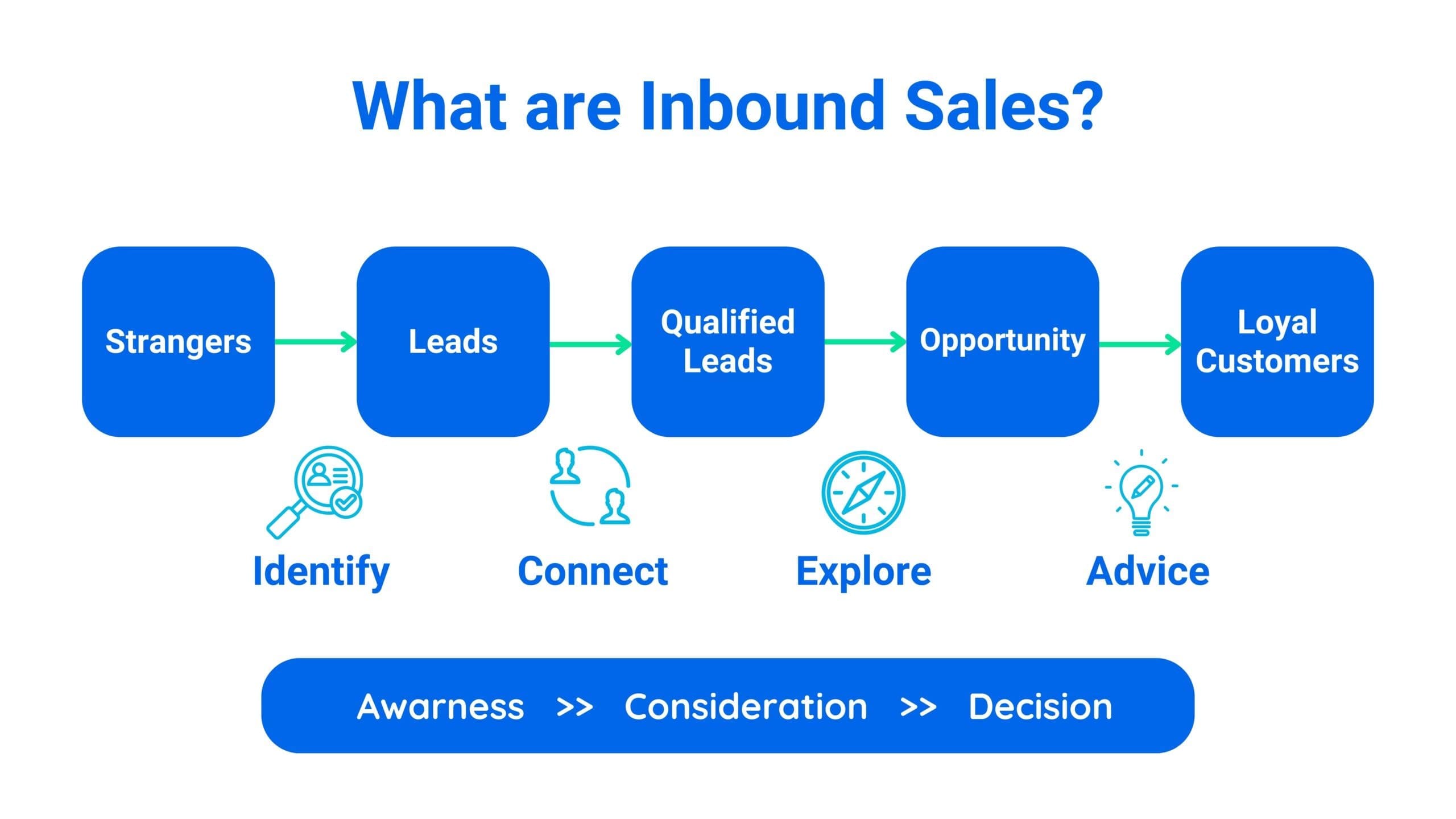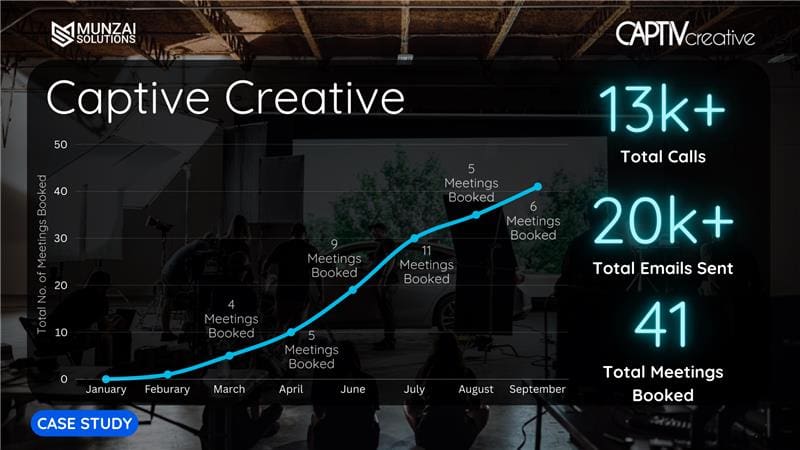In the world of sales, businesses rely on two main approaches to connect with prospective clients: inbound and outbound sales. These strategies are fundamental to shaping any company’s sales plan. Both have distinct advantages, and understanding how they work can help you decide which is best suited for your business. In this article, we’ll dive into the differences between inbound vs outbound sales, their key characteristics, and how they jointly influence your overall sales strategy.
What are Inbound Sales?
To define inbound, it is a sales approach where you draw in potential customers to your business by demonstrating your value proposition. People find you through content you create, like blog posts, social media, and other forms of inbound marketing. These customers are already interested in your product or service and are looking for solutions that you offer.
In other words, inbound sales is a more passive, yet highly effective, method of attracting customers who are actively searching for products or services you offer. The key is to provide helpful, relevant content that draws potential customers to your brand without being pushy or intrusive. For example, if your company has strong inbound marketing techniques like content marketing, SEO, paid ads, and social media engagement, customers will likely find you online during their search for solutions.

What is an Inbound Sales Funnel?
The inbound sales funnel refers to the process potential clients go through before making a purchase. Think of it as a roadmap that guides customers from the first moment they discover your brand, through consideration, and finally to a purchase.
Here’s a reminder on how sales funnels work:
- Awareness Stage: At the top of the funnel, you attract visitors through valuable content—like blogs, videos, or infographics—that educates them about your industry or service.
- Consideration Stage: As prospects move down the funnel, they start considering your company as a solution to their problem. At this stage, you provide more targeted content, such as case studies or webinars, that addresses specific customer needs.
- Decision Stage: Finally, as prospects near the bottom of the funnel, they are ready to make a purchase. This is where you offer detailed product information or consultations to help them make a final decision.
The unique part about inbound sales funnels is that, by the time you get a lead, it is already in the middle of the funnel. From there, you just need a well-structured approach to demonstrate your value and convince them to do business with you.

Using Inbound Sales Software
To enhance the effectiveness of your inbound strategy, many companies use inbound sales software. Tools like HubSpot Inbound are widely popular for automating parts of the sales process, managing leads, and offering personalized customer experiences.
For instance, HubSpot Inbound helps track website visitors, convert them into leads, and automate follow-up communication. With these tools, businesses can streamline processes and get actionable insights into customer behavior, leading to a smoother and more efficient sales process.
What is Outbound Sales?
Now, let’s talk about outbound sales. While inbound is about attracting leads who come to you, outbound sales is more proactive. In outbound sales, businesses take the first step by reaching out to potential clients, even if they haven’t shown prior interest. Common outbound sales methods include cold calling, targeted email marketing, and direct outreach on social media.
Instead of waiting for leads to come to you, you actively search for prospects and initiate the conversation. A good outbound sales team identifies potential clients who could benefit from their product or service and makes the first contact.
For example, a sales rep might research a company, reach out via email or phone, and offer a solution based on that company’s needs.

Key Outbound B2B Sales Techniques
In outbound sales, a variety of techniques are employed to find and engage potential clients. Some common B2B sales techniques include:
Cold Calling:
- Cold Calling: One of the most traditional forms of outbound sales, this involves directly calling potential clients to introduce your products or services. While challenging, cold calling remains an effective method if done right. A well-crafted script and confidence in delivering it are essential.
Email Campaigns:
- Email Campaigns: Creating targeted, personalized email campaigns is another method in outbound sales. Personalizing the content based on audience segments helps improve engagement and response rates.
Social Media Outreach:
- Social Media Outreach: Social platforms like LinkedIn and Twitter can be useful for outbound prospecting. By reaching out to potential clients through professional networking sites, sales teams can foster relationships that lead to business.
Networking Events:
- Networking Events: Attending conferences and events is a form of outbound sales where businesses make face-to-face connections with prospects. These events are valuable for building relationships in person and initiating sales conversations.
Follow-up Strategies:
- Follow-up Strategies: Regular follow-ups are essential in outbound sales. Whether through email or phone, personalized follow-up messages that address previous conversations can help close deals.
Outbound Sales Software
Businesses use outbound sales softwareto streamline processe. These tools manage contact lists, track customer interactions, and automate outreach efforts. Outbound sales software enhances the effectiveness of sales campaigns, making them more targeted and data-driven.
For example, tools like Salesforce or Outreach help sales teams monitor their outreach, create follow-up schedules, and measure success based on real-time data. These tools not only increase productivity but also improve the chances of converting prospects into customers.
Inbound vs Outbound Sales: Key Differences
Now that we’ve explored both inbound and outbound sales, let’s break down the core differences between the two approaches.
Sales Cycle:
- Inbound sales typically have a shorter sales cycle because of the point at which the customer journey with a business begins.
- Outbound sales tend to have a longer sales cycle because of the cold outreach, which leaves room for building trust and rapport.
Nature of Approach:
- Inbound Sales is more passive. You attract clients who are already interested in what you offer. Inbound leads usually have identified their problems or needs and know what they are looking for.
- Outbound Sales is proactive. You reach out to potential clients who may not have heard of your company yet. You would need to establish a need or a pain-point and provide consultation before driving sales.
Lead Generation:
- In inbound sales, leads are generated through inbound marketing efforts, like content creation, SEO, and social media.
- In outbound sales, leads are generated by direct outreach, such as cold calling, email campaigns, or attending networking events.
Sales Funnel Dynamics:
- Inbound sales involves addressing needs, demontrating value proposition, and guiding potential customers through an informative journey (the funnel) from to encourage a purchase.
- Outbound sales focuses more on raising awareness of your brand, creating interest and generating quick actions through direct engagement.
Tools and Software:
- Inbound sales teams rely on tools like HubSpot Inbound to manage customer relationships and track leads.
- Outbound sales teams use CRM tools and email outreach software to organize contact lists and monitor interactions.
Audience Engagement:
- Inbound sales focuses on building long-term relationships with prospects who are genuinely interested in your products.
- Outbound sales focuses on making an immediate connection and moving quickly toward a sale.
Inbound Call Center vs Outbound Call Center
Another key difference lies in how inbound and outbound sales calls are handled. An inbound call center typically handles incoming inquiries from potential clients. These clients have shown interest in the product or service and are reaching out for more information.
In contrast, an outbound call center is used to make proactive calls to potential customers. These centers handle cold calls or follow-ups with prospects to drive sales and build relationships.
Final Thoughts: Which is Better?
Like most things, it’s hard to say which approach is better than the other. The choice between inbound and outbound sales depends largely on your business, industry, and target audience. While inbound offers a more organic, long-term approach to attracting customers, outbound provides immediate, direct engagement with potential clients.
Many businesses find that a combination of inbound vs outbound strategies works best. For instance, they might use inbound marketing to build brand awareness and outbound sales techniques to close deals with high-value prospects.
In the end, it’s not about choosing one over the other but finding the right balance that suits your business needs. By understanding both approaches, you can craft a sales strategy that drives sustained growth and success.




